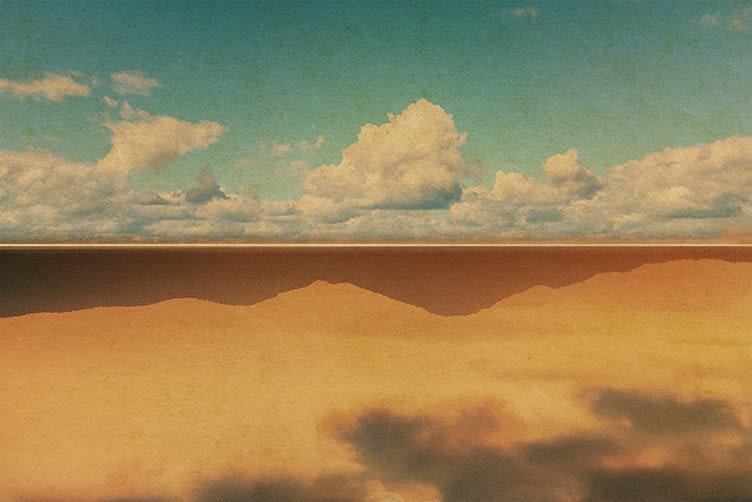
Albarrán Cabrera ES, b. 1969
Kairos #4055, 2016
Pigments on Japanese paper
and gold leaf
and gold leaf
18 x 27 cm
Edition of 20
© Albarrán Cabrera
'In the series Kairos, we use photography to rep-resent the concept of the “eternal present”. “The Now” which the Greeks called Kairos, to differentiate it from “time” – Chronos. We...
"In the series Kairos, we use photography to rep-resent the concept of the “eternal present”. “The Now” which the Greeks called Kairos, to differentiate it from “time” – Chronos.
We put together two portions of two consecutive photographs which represent a past and future moment with respect to a present time. The “eternal present” is depicted by the line between the two pictures. The perception of this line, like the fact of “seeing the present”, can be more or less obvious, but the less visible it is, the further from the truth our reality is. When human beings focus only on the past or on the future, they are unable to see “the Now”. As explained by St. Augustine: we are drawn into the past by our memories and extended into the future by our expectations.
This doesn’t let us experience the “eternal present” which is the only truth in our perception of time.
Time is a key concept in photography. The very act of taking photos captures a portion of time, placing it in an infinite, frozen time-frame. But mixing different times in a single image and showing the present as a single line brings us closer to the true nature of time in the physical world: the time that we experience is not real. Like the images we see in the photographs of this series, time is a mere human construct.
Photography, as Japanese dramatist Chikamatsu once said about art, lies in the frontier between the real and unreal, the true and the false. In this sense, photography helps us to see what is hidden from us."
Albarrán Cabrera
We put together two portions of two consecutive photographs which represent a past and future moment with respect to a present time. The “eternal present” is depicted by the line between the two pictures. The perception of this line, like the fact of “seeing the present”, can be more or less obvious, but the less visible it is, the further from the truth our reality is. When human beings focus only on the past or on the future, they are unable to see “the Now”. As explained by St. Augustine: we are drawn into the past by our memories and extended into the future by our expectations.
This doesn’t let us experience the “eternal present” which is the only truth in our perception of time.
Time is a key concept in photography. The very act of taking photos captures a portion of time, placing it in an infinite, frozen time-frame. But mixing different times in a single image and showing the present as a single line brings us closer to the true nature of time in the physical world: the time that we experience is not real. Like the images we see in the photographs of this series, time is a mere human construct.
Photography, as Japanese dramatist Chikamatsu once said about art, lies in the frontier between the real and unreal, the true and the false. In this sense, photography helps us to see what is hidden from us."
Albarrán Cabrera
BE THE FIRST TO KNOW
To stay up to date about artist news, new exhibitions and available works, sign up for our newsletter.
* denotes required fields
We will process the personal data you have supplied in accordance with our privacy policy (available on request). You can unsubscribe or change your preferences at any time by clicking the link in our emails.
